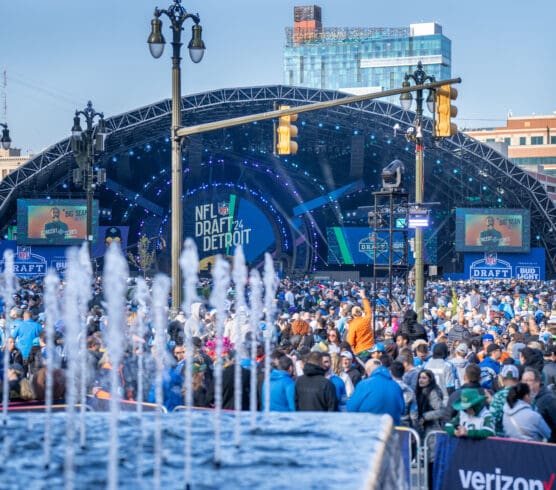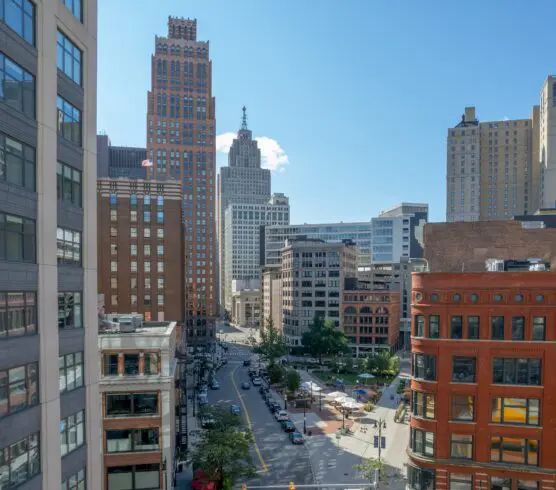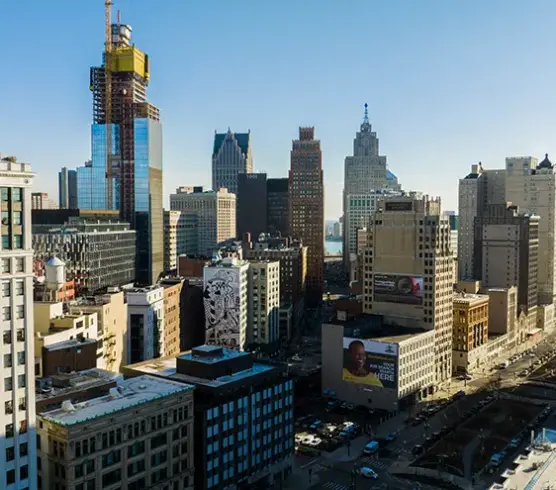By Joshua Long, Data Program Director
Observational bias is the phenomenon where the apparent observed values are different from what the actual true values are. It comes about because individuals tend to believe that what they “see” as individual observers must be universally true. But we humans are flawed and can often make lousy assumptions based on our own personal experience.
Here is an example: The pandemic turned office workers’ relationship to their offices upside down, and business districts throughout the United States have had a drastic reduction in the number of daily workers. So, from the perspective of some Downtown Detroit workers who work during normal business hours, Downtown seems to have truly little activity. However, while it is true that the daytime population of Downtown Detroit was severely impacted, what about the non-employee population (visitation), especially outside of normal business hours and workdays?
The population by day shows that while the weekday population is down substantially, the weekend population is still relatively high compared to 2019 (around 80% of 2019 Saturday/Sunday population). The graph below shows the average population by day of the week in 2019 and in 2022. Due to the reduced presence of daytime office workers, the overall number of people Downtown during the workweek is lower. But in 2019, there were fewer people per day on average on Saturday and Sunday than during the work week. In 2022, the number of people will increase on the weekend over the work week.

Source: Placer.ai, compiled by the Downtown Detroit Partnership
Residents and Visitors Only (no employees)
So, we know that the number of employees Downtown has been reduced, but what about visitors and residents? How does the population compare to 2019, after removing workers? Location intelligence data from Placer.ai allows us to segment a population by day, hour and by audience. Because of this we can compare only visitors and residents over time. We can also compare how a population ebbs and flows by hour. In the below graph, we are comparing the hourly population of visitors and residents during the week (2019 vs. 2022) and the hourly population of visitors and residents on the weekend (2019 vs. 2022). The orange lines show the weekend (Friday – Sunday), and the blue lines show the work week (Monday – Thursday).
The peak population time for non-workers in 2022 is during weekend nights from 7:00 to 9:00 p.m., around 42,000 visitors. While that is lower than the weekend peak in 2019 (about 51,000), it is higher than the weekday peak in 2019, pre-covid. It is also interesting to note that, even when taking out workers, there was a mid-day peak in Downtown population during the work week in 2019. That does not seem to be the case in 2022, when, during the work week, visitation does not have a mid-day increase. The busiest times of day for visitors over the weekend, in both 2019 and 2022, were in the evening hours.
Population by Hour

Source: Placer.ai, compiled by the Downtown Detroit Partnership
Finally, when you look at all people together, including workers, we can see that peak population Downtown pre-pandemic was during the workday, Monday – Thursday, and that peak is still higher than any time during 2022.

Conclusion
So, is there an observational bias? Does Downtown really have a significant reduction in the number of people Downtown? Yes, and no. During the day, and especially during the work week, yes, Downtown has a fraction of the number of people Downtown now compared with 2019. However, at night and during the weekend there is not such a substantial difference. And during weekend nights, there are more non-worker visitors in 2022 than there were during work weekdays in 2019.
Stay informed on all Downtown Detroit Datascape trends at downtowndetroit.org/datascape and DDP’s news & insights page.



